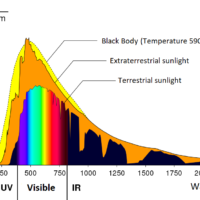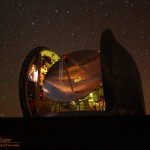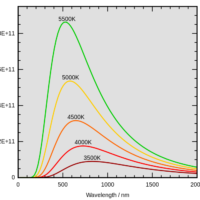Wandering the sky using a telescope and a field guide published in 1844, the better part of two centuries ago, is… uhhm… interesting. In mid-April the classic winter constellations are dissapearing into the sunset, with constellations like Monocerus and Puppis well placed for observing from my driveway just after dark. On my observing table is a reprint of that 1844 field guide, The Bedford Cycle.
Working through the entries I come to the entry for a double star Argo Navis 72 P. VIII, a designation from a very old catalog. It takes a few moments research to convert 72 P. VIII to the slightly more modern catalog number HD 71176. Modern? The Henry Draper Catalog was first published by Harvard Observatory in 1918, still over a century ago.
With the HD number I can look up the position on a modern chart and spend a few moments star-hopping the Astrola to the correct star. This double star is now located in the constellation Puppis after the ancient and absurdly large constellation Argo Navis was broken up into Puppis, Vela, and Carina.
A coarse double star, close upon the compass with which the moderns have furnished the Argo. A 6, red; B 9½, green, which is Piazzi’s No. 74, Hora VIII. A ray from Rigel passed below Sirius, and extended 25° to the east-south-east (rather more than as far again), will pick it up.
Entry CCCXXIII for 72 P. VIII. Argo Navis, A Cycle of Celestial Objects Vol II, The Bedford Catalogue, William Henry Smyth, 1844
Indeed I find the image in the eyepiece matching the view Smyth describes, a coarse double star with a bright 6th magnitude and a notably fainter companion 40″ east.
It is the star colors indicated by Smyth that get a second look. The brighter member is red as Smyth describes, or what I would personally decribe as rich orange. The star is a K4 orange dwarf star on the verge of evolving into a red giant.
About that second star… Green? Really?
Checking the SIMBAD entry for this companion star I find it is another K class star, also orange. Ascribing any color to a faint 8th magnitude star with a six inch telescope is prone to error. But still Smyth declares green… How?
Smyth was fanatical about double stars, most of the entries in the Cycle are doubles or binaries. Even when describing open star clusters he would first note the doubles within the cluster. Most entries contain tables of separations and position angles noting possible orbits for these double stars, attempting to determine if they are mere optical doubles or truly binary stars that orbit about one another.
Nearly every entry confidently notes the colors of the stars involved… Red, orange, topaz, cerulean, smalt blue, pearl white, purple, sapphire, ash-colored, dusky, and green… Smyth was not shy about using the entire dictionary of colors to describe what he percieved at the eyepiece. Observing the same stars I find my vocabulary sorely limited compared to Smyth… Deep red, red, rich orange, orange, yellow, yellow-white, white, blue-white, and blue is pretty much the entirety of my list of star colors.
Stellar astronomy was truly in its infancy in Smyth’s time, binary star motions and orbits one of the few aspects of stars that could be studied visually. It was not until the advent of photography and spectroscopy at the end of the 19th century would stars begin to reveal their secrets, discoveries that were realized in the efforts of the pioneers working on the Henry Draper Catalog at Harvard including Pickering, Cannon, and Leavitt.
Astronomers of the early 19th century had no real concept of what a star was, and what was the source of starlight, much less the colors. Conjecture ranged wildly from the heat of friction, some electrical process, to a ball of burning coal… Theories were proposed, argued, and demolished regularly.
Smyth recorded his observations with a rigorousness I can only admire, but he did so without the richness of knowledge we have today. He was very aware of the best astronomical theories of his day, and corresponded with leading astronomers. Despite a rich and growing record of observations, astronomers were lacking a great number of answers to their questions.
When I observe the same stars I have the advantage of an additional two centuries of discovery, of hard won answers to those questions. My view is tempered by this knowledge… I know the distances, the sizes, the underlying processes including the source of energy that powers starlight. I find this knowledge fascinating, adding a richness to what I see in the eyepiece, but in another way it is confining. I see a limited range of colors where Smyth saw a multitude.
Reading Smyth’s words I am given a glimpse of his view through the telescope, observing the universe with a naive eye. He could question the beauty of the universe, allowing imagination to run free without the burden of knowledge, and to discover the stars anew.

Stars, of course, cannot be green. The color of a star is a function of temperature and follows the same law as any other material heated to incandescence, hot enough we humans can see the glow.
Any object or material with a temperature above absolute zero emits light. Much of this emitted light is invisible to human eyes, well outside the narrow band of wavelengths we can see. While this glow is invisible to us, it is visible to our instruments. Build the right equipment and you can see the world around you glow.
Humans, with a body temperature about 37°C, glow in the mid-infrared, the wavelengths detected by military night vision equipment. Likewise the dust and gas in the cold corners of the galaxy glows in the sub-millimeter, visible to carefully designed telescopes equipped with detectors senstive to those wavelengths.
An object hotter than a few hundred degrees begins to emit light in wavelengths we can see with our own eyes, what is called incandescence. Think of a stove burner heating up… Once it heats sufficiently the glow is visible as a deep red, a bit hotter and it becomes a bright red, a little hotter and you get orange.
What about something hotter yet? Say a piece of steel heated by a torch? Again the metal will glow red as the temperature rises, as the temperature rises further the color will be orange, yellow, or even blue-white as it melts. You can repeat this experiment many different ways: a stove burner, the filament of an incandescent light bulb, a wire in a candle flame, a piece of steel heated by a blowtorch.
There is a direct relationship between temperature and color. Measure both the temperature and the color and you may find the equation that links them. You will find this equation in your old high school physics textbook under the name Wien’s Law. This simple equation takes the temperature of an object in degrees Kelvin and indicates the peak emission wavelength.
Note that we write “peak” emission wavelength. Any heated object glows in a range of wavelengths, called a continuum, with the most intense light at the peak.
Back to the idea of green stars… Stars follow Wien’s law with the color dertermined by the surface temperature of the star. This is how astronomers measure the temperature of a star, simply by examining the spectra of the star and picking out the peak wavelength.
Plugging some numbers into the equation for Wein’s Law you could see that an object heated to around 5700°K should emit a peak wavelength around 508nm wavelength, in the middle of what we see as green. Yet what we see is white.

This is where the complexities of human vision enter the problem. Our vision evolved to use light emitted by an object with a surface temperature of 5700°K, our Sun. We see sunlight as white even though the peak wavelength is somewhere in the green. While green light may be the most intense, the whole spectrum is there, what we see as the rainbow when it is spread out by a prism.
Thus we see the Sun as white, or perhaps yellow-white, but never green. The same with stars, we see yellow-white, white, or blue-white in the temperature ranges from 3000 to 6000°K and hotter.
So how would an observer percieve a green star? The answer is probably contrast with another color. This is yet another quirk of the human visual system, where contrasting colors change our perception. The internet is rife with examples of this, such as the “Which color is this dress?” meme. Encounter two stars with vividly differing colors next to each other, such as the double stars Smyth sought, and perception will be colored by the failings of the human visual system.
Smyth was aware of the effect of contrasting colors, but he also had no way of knowing the “true” colors. Thus his descriptions were based on his perception at the telescope. Peering at the rich orange star HD 71176 I could see, a bit, how the faint companion could be percieved as green against the orange glare.
While Smyth’s desciptions may be a bit overly colorful, they are also fascinating to read, a window into the science of astronomy as it existed in the 1830’s. His descriptions are rich with discussion of what was known, and the struggle to push that knowledge further, teasing little facts from the starlight using modest telescopes, the human eye, and irrepressable human intellect.








That was an awesome article! Thank you, Andrew.